Blisteringly fast and bursting with emotion, the Italian Grand Prix at Monza is one of the hottest Formula 1 races of the season. With its gorgeous parkland location and over a century of history, this iconic Italian race is universally hailed as one of the greatest.
In 2024, the Italian Grand Prix will celebrate its 95th edition in what is likely to be one of the most exciting iterations in recent years. Read on as we explore this illustrious race and the city of Monza in our insider’s travel guide.

Image: Ultimate Driving Tours
When is the 2024 Italian Grand Prix? Dates & race weekend schedule
Let’s answer the most important question: when is Monza F1 2024 happening? The race itself takes place on Sunday, 1 September 2024, with the full schedule as follows:
Friday, 30 August: Practice 1 and Practice 2
Saturday, 31 August: Practice 3 and Qualifying
Sunday, 1 September: Race
This afternoon race starts at 3 pm Italian time (CEST), which is translated to the following times around the world:
United Kingdom (BST): Race starts at 2 pm on Sunday, 1 September
United States East Coast (EDT): Race starts at 9 am on Sunday, 1 September
United States West Coast (PDT): Race starts at 6 am on Sunday, 1 September
Australia (AEST): Race starts at 11 pm on Sunday, 1 September
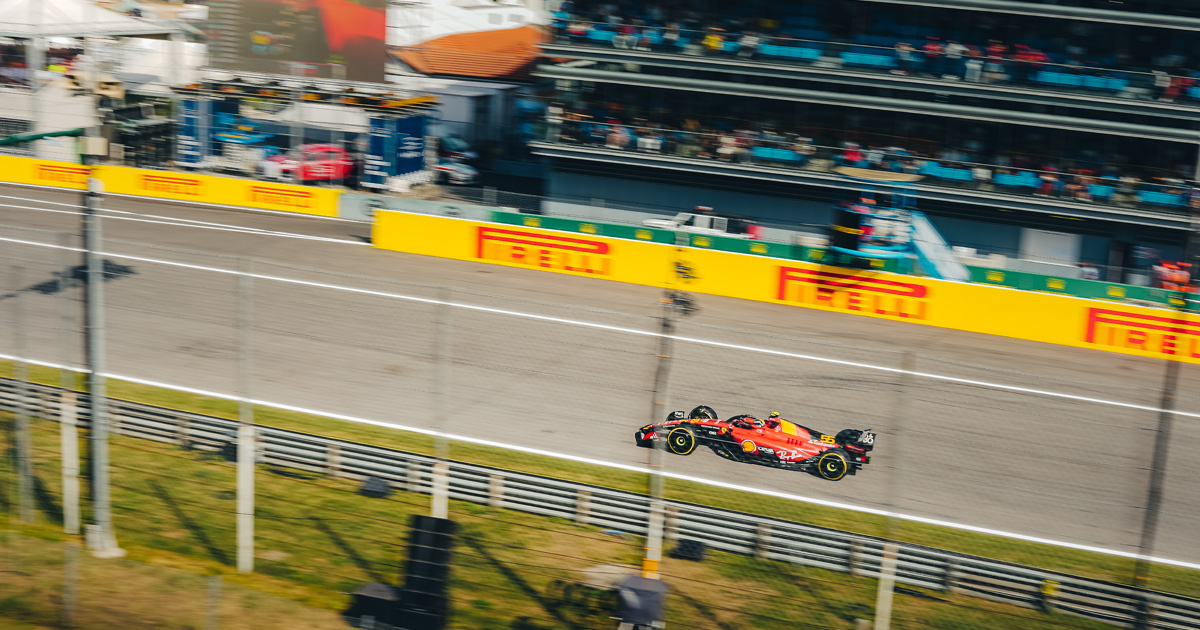
Image: Ultimate Driving Tours
Latest news ahead of the 2024 Italian Grand Prix
Every team wants to win at Monza, particularly Ferrari who will crave a good result in front of the home support. Ferrari has already shown big improvements compared to last year, recording two wins in the opening half of the season (Australia and Monaco). It’s been five years since the Prancing Horse last took the chequered flag at Monza, courtesy of Charles Leclerc in 2019. Both Leclerc and Carlos Sainz will be determined to win this one.
Max Verstappen will once again be the favourite, having taken first place at Monza in both 2022 and 2023, and maintaining his excellent form this season. Fortunately, the 2024 season has been considerably less formulaic than 2023 due to the quality and confidence shown by McLaren and Mercedes in recent races. Ultimately, this unpredictability makes for a very exciting race.
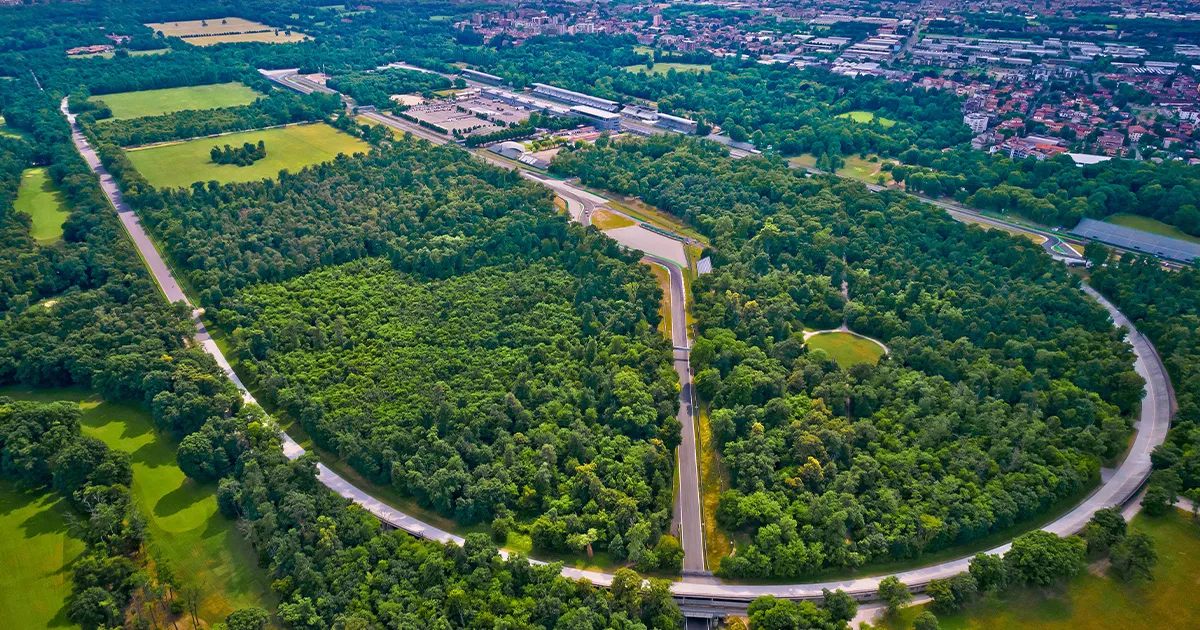
Image: Adobe Stock Images - xbrchx
Why Monza is so special
Monza holds a special place in the hearts of Formula 1 fans for its history, racing pedigree and potential for drama.
Set in a gorgeous royal park, the Autodromo Nazionale di Monza first opened in September 1922 as the world’s third purpose-built racetrack. Later that month, Monza hosted its first Italian Grand Prix.
In 1950, when the Formula 1 World Championship was created, Monza became the official home of the Italian Grand Prix. Aside from a year of refurbishment in 1980, it has hosted this adored race every season since.
It may come as no surprise that Monza also claims the title of holding the most F1 Grands Prix in history, with 73 races. The famous street circuit at Monaco comes a close second, hosting 70 Grand Prix races.
Monza is also special because of its potential for speed. It’s the fastest F1 track on the calendar, with speeds averaging 264 km/h (164 mph) and a white-knuckle 354 km/h (220 mph) straight. The Temple of Speed certainly earns its nickname!
Finally, Monza is the home of Ferrari and its tifosi – F1’s most emotional fans. The grandstands on race day are a sight to behold. If you are a neutral, then hope for a Ferrari victory as the pit lane invasion complete with red flares is a captivating sight.
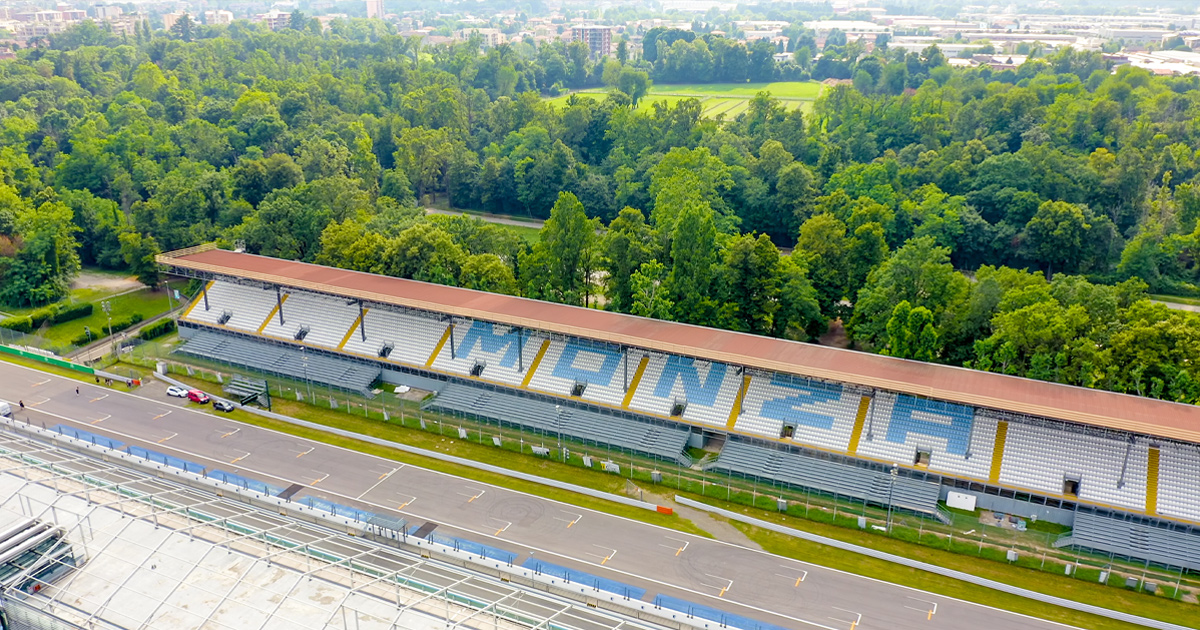
Image: Adobe Stock Images - nikitamaykov
Italian Grand Prix facts and history
With a long and storied history, there’s naturally an abundance to learn about Formula 1 at Monza. Here are our top five Monza facts.
#1 – It’s the fifth-oldest Grand Prix race in the world
With its inaugural race in 1921 at nearby Montichiari, the Italian Grand Prix was the fifth national Grand Prix to be held. Its place on the list comes after the French, United States, Spanish and Russian GPs.
#2 – It’s the most-held Grand Prix race in history
Although it’s not the oldest, the Italian Grand Prix is the most held Grand Prix in history, with 94 editions across multiple locations around Italy since 1921. In 2024, the Italian Grand Prix celebrates its 95th anniversary.
#3 – It’s taken place in multiple venues
The Italian Grand Prix has been hosted at various Italian tracks, including Montichiari, Livorno, Milan, Turin and Imola. However, since 1949, the Italian Grand Prix’s true home is Monza, which will continue to host the event until at least 2025.
#4 – It’s the shortest race on the calendar
Monza is usually the shortest race on the F1 calendar, with 53 laps of its 5.793km circuit. It holds the record for being the shortest race to reach full distance when, in 2003, Michael Schumacher crossed the line in a brisk 1 hour 14 minutes.
#5 – It’s home to the closest finish in F1 history
In 1972, Monza hosted a thrilling Italian Grand Prix where race winner Peter Gethin, driving for BRM, finished 0.01 seconds ahead of second-placed Ronnie Peterson. In fact, the top five finishers that day were separated by a razor-fine margin of 0.61 seconds. Monza is no stranger to close finishes, with Jackie Stewart beating Jochen Rindt by just 0.08 seconds in the earlier 1969 Italian GP.
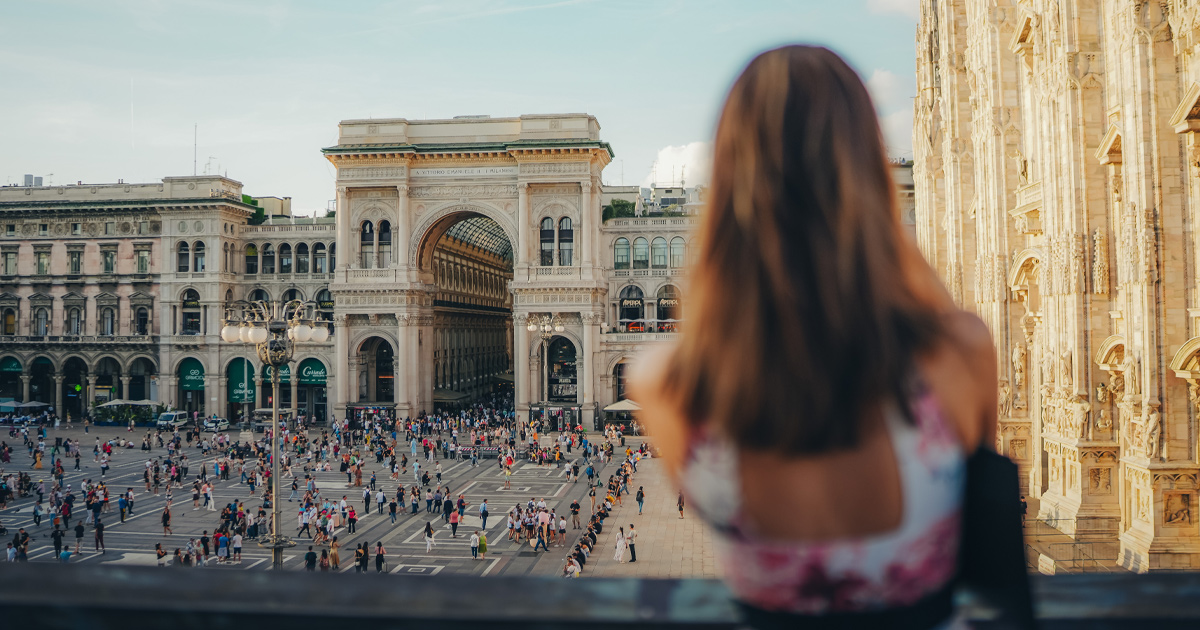
Image: Ultimate Driving Tours
5 things to do when visiting Monza
Formula 1 and Monza may be a match made in heaven, yet this beautiful area of Italy has so much more to offer than just racing. Here are five things you must do when visiting Monza.
#1 – Explore the City
Set in the northern region of Lombardy, Monza is a gorgeous medieval city brimming with culture, history and architecture. The Arengario in the historic centre is an excellent place from which to explore the city’s history and enjoy the surrounding shops and cafes. You also have to visit the iconic Duomo di Monza – an immense Gothic cathedral boasting remarkable Renaissance frescoes and gorgeous detail both inside and out.
#2 – Chill at the Parco di Monza
Dial back the pace with a relaxed day at the Parco di Monza, which is Europe’s largest walled park. This enormous green jewel is a haven for wildlife and plants, not to mention residents and visitors. It boasts pleasant walking trails, generous lawns which are ideal for sunbathing, a golf course, tennis courts and a 50m Olympic swimming pool. You can also explore the park’s historic villas – the palatial Villa Reale is a highlight and guided tours are available.
#3 – Visit the Autodromo Nazionale di Monza
Even when the Formula 1 is not in town, the Autodromo Nazionale di Monza is well worth a visit. Here, you can explore the history of the track and see behind the scenes, from the podium to the press room, or jump on a minibus for a track tour. You can increase the exhilaration by opting for a track day, racing around the curves of Monza in your own car.
#4 – Indulge in Monza’s culinary specialities
The city of Monza is bursting with culinary delights that demand indulgence. The dish of Lombardy is creamy risotto, with Monza’s signature variation, risotto alla monzese, combining the rice dish with Luganega sausage and saffron. Follow this with a slice of torta paesana, a delicious ‘village cake’ made using stale bread soaked in milk, and flavoured with cocoa, pine nuts, raisins and candied fruit. Monza is also the perfect place to enjoy a regional fine wine, such as the bright red Valtellina or a sparkling Franciacorta from nearby Brescia.
#5 – Enjoy a day trip to Milan
No visit to Monza is complete without a trip to the fashion capital, Milan. Just nine minutes away via regular trains, Milan is the region’s biggest metropolitan city and is a prime destination for culture, art and style. Over a short weekend you can enjoy a show at the famous La Scala theatre, gaze in wonder at The Last Supper, and shop for Italy’s finest fashion in the Galleria Vittorio Emanuele II – Italy’s oldest active shopping gallery.
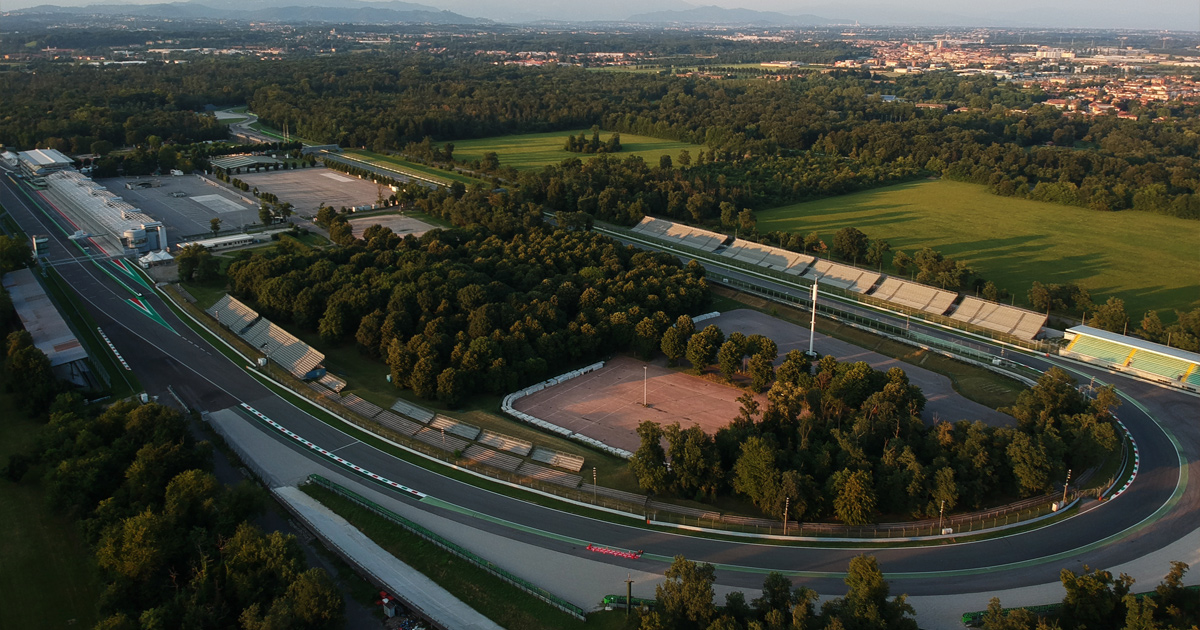
Image: Adobe Stock Images - mattiapro9
Italian Grand Prix FAQ
Ever wanted to know how to dress for Italy in late summer? What about the best F1 Monza tyre strategy? Discover all you need to know in our Monza FAQ.
Why are there two Italian Grands Prix?
Italy is in the enviable position of being permitted to host two Grand Prix races – the Italian Grand Prix at Monza and the Emilia Romagna Grand Prix at Imola. This is because of Italy’s illustrious motoring heritage and strong F1 fanbase. In addition to the classic Monza race, the San Marino Grand Prix was held at the Autodromo Internazionale Enzo e Dino Ferrari in Imola until 2006, then returned as the Emilia Romagna Grand Prix during 2020, when the global pandemic caused a calendar reshuffle. Since then, Italy has continued with two Grands Prix, although whether or not this will remain after the current contract ends in 2025 is another question.
Where do you fly into for the Italian Grand Prix?
While Monza does not have an airport, nearby Milan boasts three: Linate, Malpensa, and Bergamo. All offer relatively simple ways to reach Monza, yet the closest and most convenient is Linate, which is around 30 km (18 miles) from the Monza Autodromo. This translates to a roughly 30-minute drive from the airport to the racetrack. If you are coming from outside Europe, you are more likely to fly into Malpensa, which is approximately 60 km from the Autodromo – around one hour’s drive.
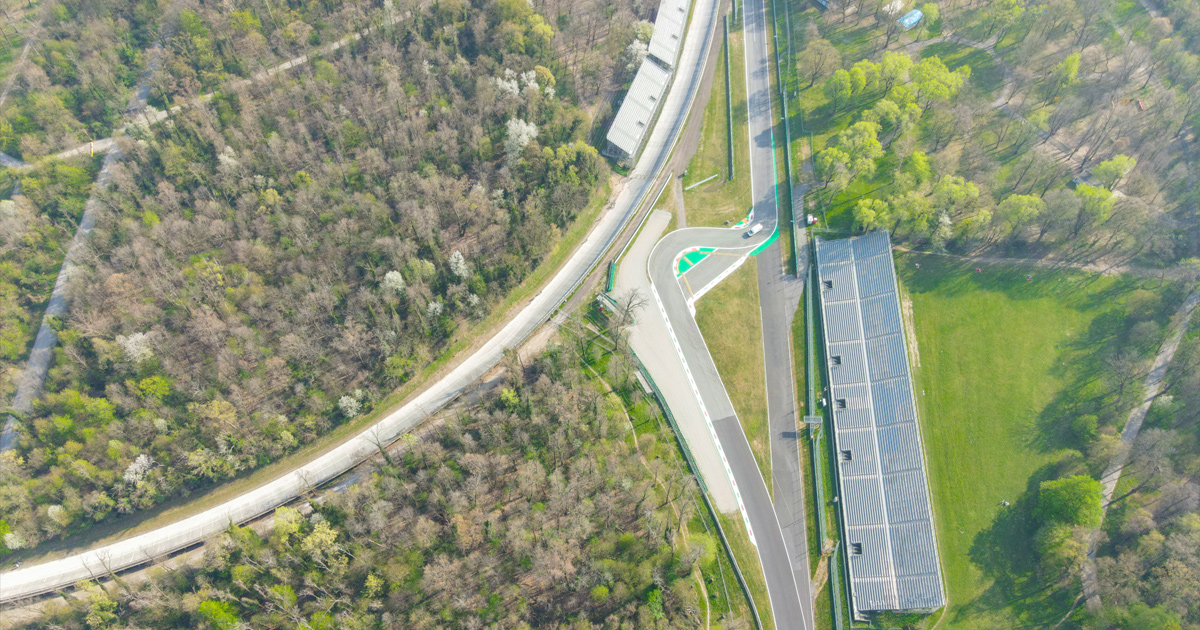
Image: Adobe Stock Images - AerialDronePics
What are the famous corners at Monza?
The blistering straight sections of Monza truly set this circuit apart, yet the eleven corners offer plenty of high-speed action too, many of which are icons in the world of F1.
Soon after lights out, drivers face the thrilling third corner, Curva Grande, sailing through this sweeping curve at full throttle. Then comes the Variante della Roggia (4 and 5), a left-to-right chicane and an excellent overtaking spot. This is shortly followed by Curva di Lesmo – a challenging duo of corners (6 and 7) that will punish mistakes and leave over-eager drivers spinning in the gravel. Then they will face the Variante Ascari (8, 9 and 10), which is a famous high-speed chicane that leads into the final section of the track.
Yet the most famous corner at Monza is the Curva Parabolica – the ferociously fast final corner that leads into the pit lane straight. In 2021, the turn was officially renamed the Curva Alboreto in honour of the Italian racing stalwart Michele Alboreto, although it will always be referred to as Parabolica by the F1 faithful.
What’s the weather like in Monza in September?
The weather in Monza in September is often still very pleasant, with an average daytime temperature of around 22°C (72°F). However, rain can also be expected at this time of the year. It’s therefore worth checking the weather forecast before spending a day at the Autodromo.
We suggest coming prepared for all scenarios with a hat, rain jacket, small umbrella, sunscreen and sunglasses. This is particularly important if you are in general admission or are sitting in an uncovered grandstand.
What is the pit stop and tyre strategy at Monza?
Being the shortest race on the calendar, the Monza pit stop strategy is straightforward, typically involving just one stop. The timing of this stop depends on the tyre strategy chosen by teams. Starting on medium tires then switching to hard will mean a pit stop window falling between the 20th and 26th lap. On the other hand, starting with the soft tyre before switching to hard would mean an earlier stop, usually between the 14th and 20th laps.
Why is Monza so famous?
The reason Formula 1 in Monza is so famous can be condensed into three words: history, speed and passion. Every edition is fast and ferocious, which is enhanced by the atmosphere created by the Italian fans.
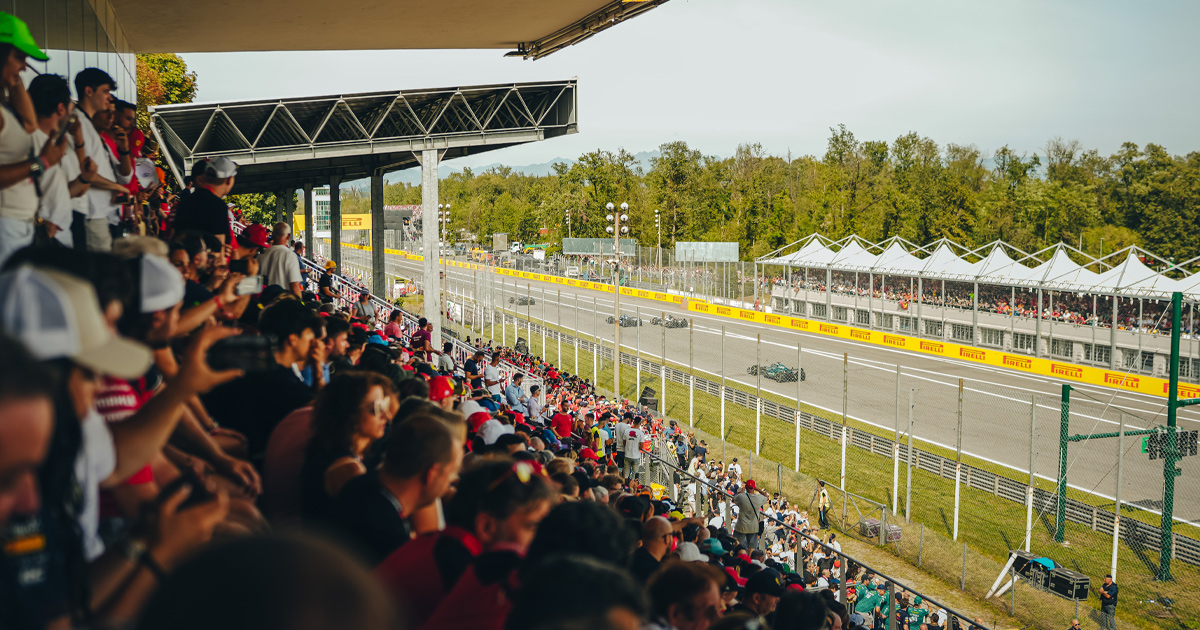
Image: Ultimate Driving Tours
Join us at Monza for the 2025 Italian Grand Prix
You can experience the excitement of Monza by joining us for our exclusive Italian Grand Prix hospitality package in 2025.
Alternatively, if you’d like to extend your adventure, why not join us for one of our signature supercar tours? Our Italian supercar tour takes you to the Dolomites, Lake Garda and more in a fleet of supercars, beginning after the Monza F1 weekend. Or, arrive at Monza in rare style with our Alpine Royale tour, a luxurious journey from Munich to Milan via St. Moritz.
Our Monza F1 package is the ultimate way to enjoy this legendary race, with magnificent views of the home straight, gourmet catering, a premium bar and live entertainment. Enquire now for 2025 as places are limited.
If you want to learn more about the unmissable experiences mentioned here or any of our F1 events, speak with our friendly travel concierge team today.
Share Article
